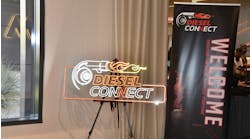Are you blind? Why is it then that different people in your organization look at the maintenance parts storeroom and don't see what you see. It's frustrating.
To explain what's going on, let's consider the story about six blind men examining an elephant.
One day an elephant walks into a village. The villagers had never seen an elephant before. A group of six blind men decided to find out for themselves just what this elephant was. Each touched a different part of the mammal.
"Hey, the elephant is a like a tree," cried the first blind man as he touched the leg.
"No, it is more like a rope," said the second blind man who touched the tail.
"I think it is like a thick snake," chimed in the third as he touched the trunk.
"A snake? No, it's flat like a banana leaf fan," said the fourth man who was touching the ear of the elephant.
"A banana leaf? Are you mad? It is more like a huge wall," laughed the fifth man feeling the side of the elephant.
"I don't know what you are all feeling but this elephant feels to me like a solid pole," said the sixth man who touched the tusk.
They six men began to yell at each other and argue about the elephant. A wise man was passing by and stopped and asked them, "What are you blind men arguing about?"
Almost in unison they replied, "We cannot agree about what the elephant is like."
So What?
So, what does this have to do with the parts storeroom?
One feature of the modern corporation is the departmentalization of functions. Companies do this to both create operational efficiencies and manage the span of management control.
Thus, most organizations will have an operations, maintenance, storeroom and logistics, purchasing and procurement and finance group. But what happens when these functions overlap? The elephant is your storeroom, and its materials and spare parts are inventory.
Each different corporate function has an influence on your materials and spare parts management outcomes. Yet each operates independently, often with little incentive to coordinate activities to improve the overall business results.
Each functional group does what it thinks is needed, based on what it sees. Each group looks at the same storeroom and literally sees different things.
A Matter of Viewpoint
The storekeepers see a bunch of SKUs (stock keeping units) that they have to receive, store, issue, count, care for and requisition. They get yelled at by the maintenance and operations groups for not having enough parts and by finance for having too many.
The maintenance department sees the inventory as one of the elements needed to efficiently repair the company's assets. It gets yelled at by operations if the part is not available and downtime results. So, maintenance yells at the storekeepers to make sure that everything is stocked. The storekeepers yell at maintenance for not telling them how many of a part they really need or whether it was needed at all.
Purchasing sees all the hard work to source the parts, locate obsolete parts and negotiate the best prices and terms. It is yelled at by maintenance for taking too long when buying parts for breakdowns.
Purchasing is yelled at by finance to save more money, which in turn leads to finance getting yelled at again by maintenance for buying cheap parts that do not last. Purchasing, in turn, yells at maintenance to give them more time and not have so many emergencies. They also provide maintenance with meaningful advice, such as "failing to plan is planning to fail."
Finance sees money tied up that they believe could be used better elsewhere. It yells at storekeepers, maintenance and purchasing to cut costs, reduce inventory levels and stop spending so much money. Finance sees fixing things as a pure expense.
Additionally finance gets yelled at by all the groups for asking for too much to be achieved with too little.
The Entire Picture
With the elephant in the parts storeroom it seems that everyone is yelling at everyone else. No one sees the bigger picture.
But what if all the functional departments could all see the whole elephant. Suppose each group could understand the perspective of the others? What if all the groups understood what the organization was trying to achieve and the constraints within which they each group is working?
Maybe then, all groups could have a meaningful discussion about the management of the strange beast known as materials and spare parts inventory management. Perhaps the groups could work out a way to collectively improve the everyone's results.




